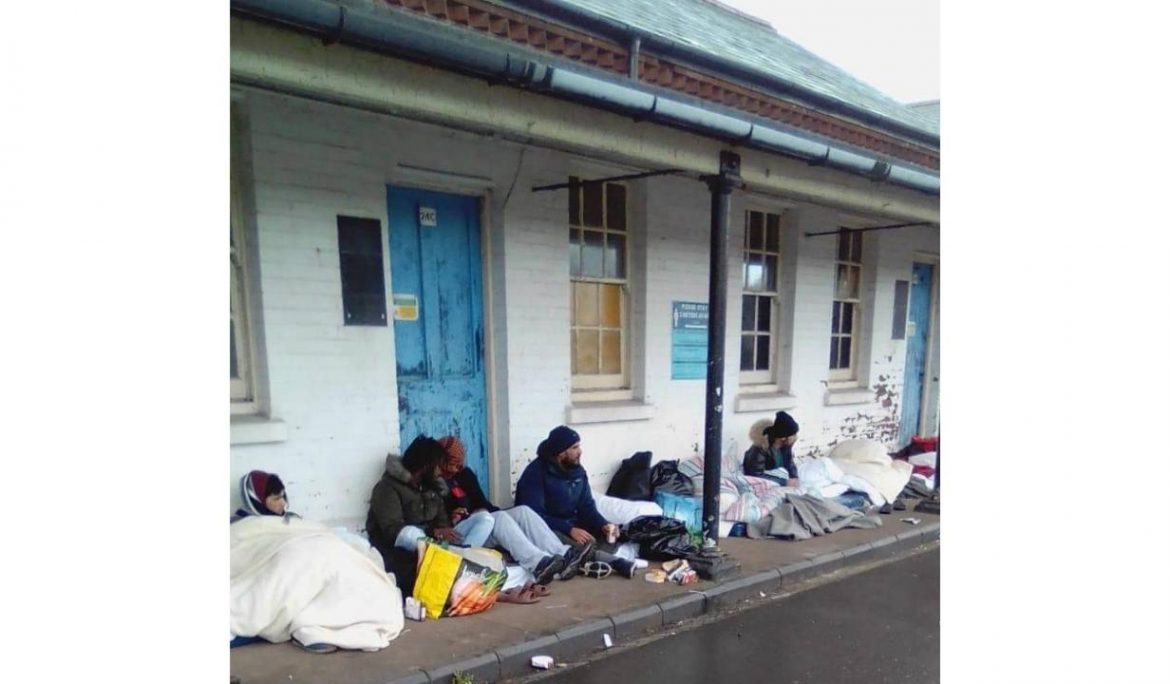How Napier Barracks became a horror story

You probably know by now that yesterday, the High Court ruled that this government’s housing of asylum seekers at Napier Barracks was unlawful.
You probably also know that Care4Calais campaigned hard to stop asylum seekers being housed there.
And that we’ve worked night and day to help get the most vulnerable people out of there, and into more suitable places.
But why is it such a horror story for some people?
I work on Care4Calais’ Napier team, which reaches out to people who have been taken to the barracks, and tries to make them feel supported. Many people who are sent there get put into taxis and driven at very short notice. They might not be told where they’re going. In some cases, they’re explicitly told that they won’t be going to Napier – its reputation among asylum seekers means they’re afraid of the name.
Of course when they arrive, they’re alarmed and scared to realise where they are.
They find an austere and dilapidated building. With its eight-foot fences, cell-like rooms and barbed wire, Napier resembles the prisons in which some of the people taken there have been tortured, or held while being trafficked.
At worst, this can trigger serious PTSD. At best, they feel cut off from the outside world and vulnerable.
True, a few people don’t mind too much. They’ll be reassured by us putting them in touch with local Care4Calais volunteers, and ensuring they have an asylum lawyer. Others become severely depressed and in some cases even attempt suicide.
On the Napier team, we work to simply be a friend, to counter feelings of isolation and abandonment. We let asylum seekers know that their feelings are valid, that we will try to make the experience more bearable. Most importantly, we work with lawyers to make sure everyone has legal representation.
It’s important to understand that this is not a case, as Priti Patel has suggested, of asylum-seekers being demanding. It is case of severely traumatised people having traumas rekindled. It is a case of human beings desperately in need of support instead being abandoned.
A significant number of people taken to Napier have been trafficked, illegally imprisoned and tortured. The conditions in which they were held were – shamefully – not entirely dissimilar to Napier. When they are sent there, they assume that they have somehow ended up back in prison. Yes, they might be allowed to leave as they would in a hotel, but they can be so disoriented they don’t understand that. It can be horrific for them.
It’s inevitable that this old, outdated, badly-maintained building should trigger past trauma in so many who have the misfortune to end up there. The continuing use of it is careless at best, and at worst callous.
Our work there is in many ways typical of the sort of hands-on work Care4Calais volunteers are doing all the time. It’s hectic, extremely stressful and expensive, – and, of course, all utterly unnecessary because, as the High Court has now said, people shouldn’t be housed in such conditions in the first place.
Ella, Care4Calais volunteer, London
To help those stuck in napier barracks donate now care4calais.org/napier-appeal






